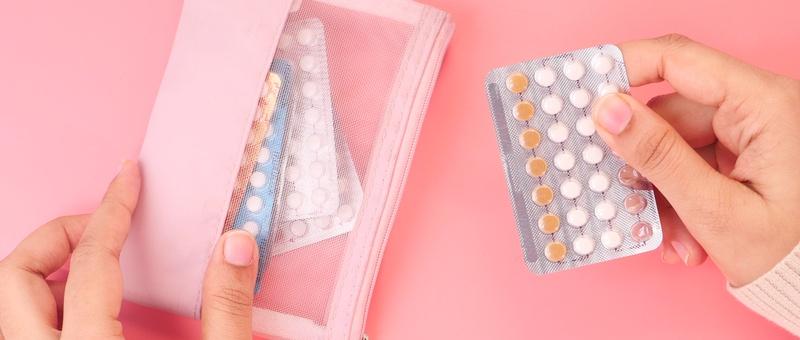
¿Se pueden prevenir las hemorragias intermenstruales con la píldora?
Revisado por la Dra. Sarah Jarvis MBE, FRCGPÚltima actualización por Natalie HealeyÚltima actualización 4 Jun 2019
- DescargarDescargar
- Compartir
- Idioma
- Debate
Breakthrough bleeding on the combined pill is common - especially when you first start taking it, or if you choose to take it without a break. But is there anything you can do to prevent breakthrough bleeding like spotting? We ask a gynaecologist.
En este artículo:
Seguir leyendo
Avoiding bleeds by taking the pill without a break
If you're using the combined oral contraceptive pill, you likely take a tablet every day for 21 days, followed by seven-day break for a bleed. That's the way it's currently licensed for use.
However, earlier this year, the Faculty of Sexual and Reproductive Healthcare (FSRH) published new guidance stating that this break was medically unnecessary. You can safely avoid monthly bleeding and the symptoms that come with it by running your pill packets together.
Benefits of taking the pill without a break
Reduced period symptoms - some women find symptoms associated with the withdrawal bleed, such as migraines, headaches and PMS, will be reduced.
Increased pill effectiveness - taking a break from the pill weakens the pill's ability to prevent preventing your ovaries from releasing an egg. This makes ovulation more likely if you miss any pills before or after the break.
Continuously taking the pill sounds like a solution then, since it means your bleeds will stop completely. However, it's common for those who embrace it to still experience breakthrough bleeding.
Why breakthrough bleeding happens on the pill
Consultant gynaecologist at Edinburgh University, Professor Sharon Cameron, notes that many women experience breakthrough bleeding when they first start taking the pill. "It should settle within three months, so if it's continuing you should go back and see your contraceptive provider."
She explains that taking the combined pill switches your ovaries off, and the hormones in the pill make the lining of the womb thicken up. Over time, the womb lining might start coming away. That's why you might experience light bleeding if you've been running your pill packets together.
Elección del paciente Anticonceptivos
Seguir leyendo
How to prevent breakthrough bleeding on the pill
Cameron notes that some women are just more susceptible to breakthrough bleeding on the pill than others.
However, there are certain habits you can adopt to make it less likely:
Take the pill at the same time of day to maintain hormone levels in the body.
Check that other medications you take aren't interfering with the pill.
Stop taking the pill for four days to allow the womb lining to shed, and then start again.
If you opt for the 4-7 day break, this will not reduce the effectiveness of the contraceptive pill, Cameron explains.
"With a four-day rather than a seven-day break, there's less likelihood that the ovaries will wake up and for one of the eggs to develop enough for ovulation."
Si esta pausa de cuatro días no mejora la hemorragia, acude a tu médico de cabecera o a tu centro de salud sexual.
Other causes of breakthrough bleeding
Missing the pill.
Diarrhoea and vomiting may prevent the pill from being absorbed properly.
Certain medications (including herbal preparations) may interact with the pill.
Smoking can make breakthrough bleeding more likely.
STIs such as chlamydia.
Todas estas situaciones pueden disminuir la eficacia anticonceptiva de la píldora.
Causas raras
Womb and cervical cancer.
If breakthrough bleeding on the pill isn't not normal for you, you should get it checked out by a doctor.
"There are some women who just seem to bleed on every sort of hormonal contraception, and that's because the methods we have don't entirely replicate what the natural cycle would do. But as long as there's nothing harmful going on, there are some women who are prepared to put up with it in order to have an effective method of contraception", explains Cameron.
Breakthrough bleeding and PMS
Many women experience mood swings around their period. So could breakthrough bleeding also be associated with PMS, even if you've been taking the same dose of hormones every day?
Anecdotal reports suggest feeling anxious or agitated when breakthrough bleeding occurs is common. But Cameron says the evidence for this is currently unclear.
"El estado de ánimo y la influencia de las hormonas no se conocen bien y, por supuesto, la píldora también se utiliza como tratamiento para el síndrome premenstrual", señala.
Si estás tomando un método anticonceptivo que desconecta tu ciclo natural y te administra una dosis continua, es difícil entender por qué afectaría a tu estado de ánimo. Pero algunos investigadores creen que estos cambios de humor tienen más que ver con cierta parte del cerebro que con los ovarios, revela Cameron.
"Si alguien tenía esos síntomas con la píldora y son molestos, merece la pena probar una píldora combinada diferente para ver si le va mejor. Y hay muchas combinaciones de píldoras, u otros métodos anticonceptivos, para probar".
Algunas mujeres también prefieren no tomar paquetes de píldoras a la vez por miedo a la hemorragia monstruosa y a los calambres que les esperarán cuando finalmente se tomen un descanso. Pero Cameron cree que esto no debería ser una gran preocupación.
"La toma continuada de la píldora puede ser beneficiosa para las mujeres que tienen hemorragias abundantes cuando no toman la píldora, porque se reduce la frecuencia de las hemorragias. Y algunas mujeres pueden pasar un largo periodo de tiempo sin sangrar. Porque para ellas, esa combinación de hormonas en el revestimiento del útero produce un engrosamiento mínimo".
Historia del artículo
La información de esta página ha sido revisada por médicos cualificados.
4 Jun 2019 | Última versión

Pregunte, comparta, conecte.
Explore debates, formule preguntas y comparta experiencias sobre cientos de temas de salud.

¿Se encuentra mal?
Evalúe sus síntomas en línea de forma gratuita
